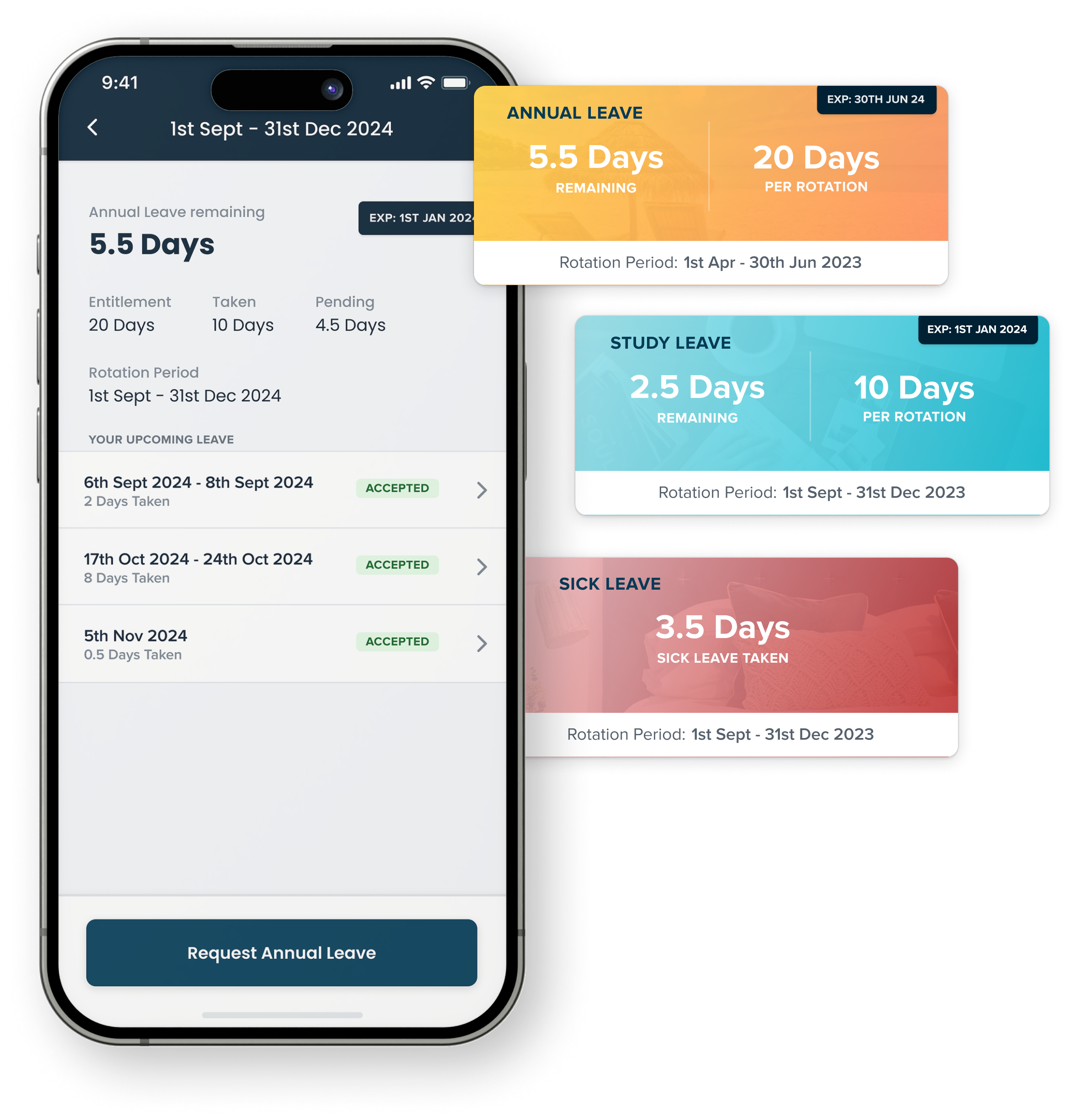Overcoming common staffing challenges with medical rostering software

NHS organisations face a multitude of scheduling challenges that can impact staff satisfaction and increase the pressure placed on already stretched workforce teams. Here’s a short guide to how medical rostering software can improve staff scheduling and provide support in the world of workforce management.
Common medical rostering software challenges in the NHS
To start, it’s best to outline the current workforce challenges that organisations face across the NHS today:
Lack of visibility
One significant issue that arises from poor medical rostering software is a lack of staffing visibility. Clinicians often struggle to easily view and keep track of their rotas, often leading to confusion, extra communication and inefficiency. Managers can face difficulties broadcasting vacant shifts to temporary workers, often relying on multiple, disconnected platforms. This fragmented approach can result in information slipping through the cracks, which can leave staff feeling uninformed and unprepared for their shifts. Consequently, both managers and clinicians frequently face last-minute rota changes, leading to an overreliance on temporary staff to fill unexpected gaps. This approach negatively impacts both workforce wellbeing and organisational spending – something innovative rostering software aims to tackle.
Complex leave management
Managing leave requests is another challenge for both managers and clinicians. Many current systems lack integrated leave management, forcing staff to use various methods of communication, from emails to in-person fleeting conversations, and even WhatsApp. This disjointed process not only complicates administrative tasks but also leads to lost requests and scheduling conflicts, creating frustration among staff who need to plan their personal lives.
NHS retention and satisfaction
Staff exit in the NHS is an extremely pressing issue (perhaps the most crucial), and is exacerbated by stress, inflexible schedules, and lack of autonomy. Clinicians often feel constrained by rigid shift patterns and the excessive administrative burden that can arise from requesting rota changes (e.g. shift swaps or exception reports). Clinicians are well aware, after years of training and hard work, that night shifts and long hours are part of the job, but it is the unnecessary inflexibility that is driving clinicians to leave the NHS soon after they start working in the current system – and this is something organisations cannot tackle on their own.
How medical rostering software addresses these issues:
Enhanced visibility and control
Medical rostering software, like Patchwork Rota, can significantly improve visibility for both clinicians and managers. For example, the ‘team rota’ view allows staff to see who they are working with and when, fostering better teamwork and preparation. This feature will also facilitate easy and safe shift swaps without central administrative intervention, streamlining the process and empowering clinicians to manage their schedules more effectively – with an emphasis on ease of use and increased attention on the UI and UX to support users throughout their journey.

Streamlined leave management
Integrated leave management features within medical rostering software simplify the process of submitting, tracking, and approving leave requests. Managers can instantly see the impact of leave on the upcoming schedule and arrange for cover efficiently. This streamlined process reduces the administrative burden and ensures that no request is overlooked, providing clarity and predictability for both staff and managers.

Boosting retention and job satisfaction
Systems such as Patchwork Rota can contribute to higher clinician retention by offering flexibility and control over schedules. Features like self-rostering allow clinicians to input their shift preferences, balancing work with personal commitments. Autonomy has been cited as playing a major role in reducing stress and enhancing job satisfaction, making staff feel more valued and less stuck in a system.
Medical rostering software can also alleviate the workload for managers by automating many scheduling tasks. Managers can focus on more strategic aspects of workforce planning, confident that the software will handle routine administrative tasks accurately. An example of this is the automatic broadcasting of a rota gap to bank, which means rostering teams no longer need to trawl through a spreadsheet to source available workers, with any compliance or safety concerns flagged directly to them in the system. This efficiency not only improves scheduling accuracy but also frees up managers to provide better support to their teams – a responsibility that many managers can find challenging to prioritise.
Implementing effective healthcare rostering software is crucial in overcoming common staffing challenges. With the right technology in place, it’s possible to create a more efficient and supportive working environment. As the healthcare sector continues to evolve, embracing advanced rostering solutions will be key to maintaining a motivated and effective workforce. In 2024, there is hope for clinicians and managers if systems are put in place that reflect what is genuinely needed to support our healthcare workforce.